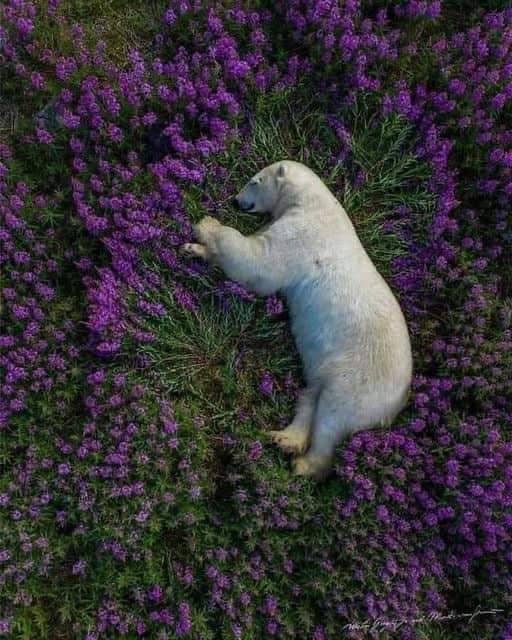#martin gregus
Text
sleepy polar bear 🥺
#video#videos#polar bears#polar bear#sleeping#animals#cute#Martin gregus#nature#green#plants#bears#1k
8K notes
·
View notes
Photo

Martin watched this polar bear cub playing in a mass of fireweed on the coast of Hudson Bay, Canada.
Photo by Martin Gregus
Wildlife Photographer Of The Year
#martin gregus#photographer#wildlife photographer of the year#polar bear cub#bear#animal#mammal#wildlife#fireweed#hudson bay#canada#landscape#nature
141 notes
·
View notes
Text
“Sweet Dreams”
Martin Gregus captured a once in a lifetime moment of a Polar Bear sleeping on a bed of fireweed.
Churchill, Manitoba, Canada
82K notes
·
View notes
Text

Even as a drone hovered above to get this shot, a large male polar bear that photographer Martin Gregus, Jr., calls Scar never stirred in this bed of fireweed. Gregus says he named many of the bears in hopes it would help people relate to them as individuals needing protection.
Snoozing in Flower Beds? Behold the Bears of Summer
A photographer spends two months in the Canadian Arctic and reveals a softer side of the world’s largest terrestrial predator.
— By Jason Bittel | Photographs By Martin Gregus, Jr. | Published August 9, 2022
“You always see polar bears on ice and snow,” says photographer Martin Gregus, Jr. “But it’s not like they stop living in the summertime.” Determined to reveal this less depicted angle on the bears, he constructed a field station on the back of a small boat and spent 33 days north of Churchill, Manitoba, in the summers of 2020 and 2021.
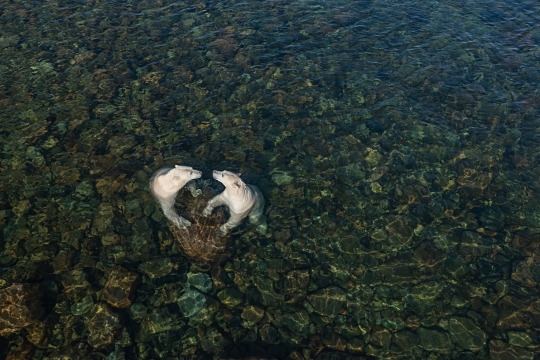
The bears that Gregus calls Betty and Veronica wrestled over this boulder for nearly an hour before he caught them forming the shape of a heart. The two seemed inseparable, often playing and hunting together.
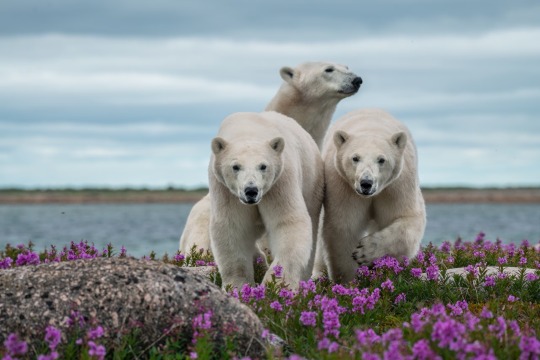
Two large cubs appear to guard their mother while a male passes by, just out of the frame. For Gregus, the image recalls Cerberus, the multiheaded dog of Greek mythology.
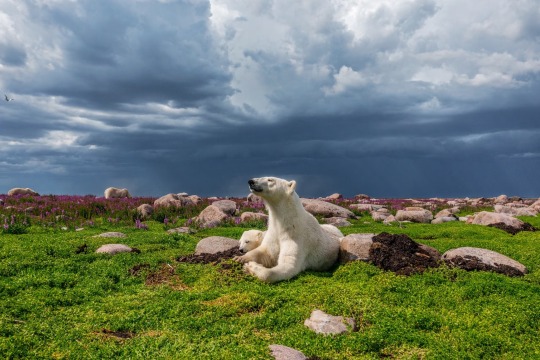
Aurora and her cub, Beans, hunker down as a storm approaches. Thunder and lightning have recently become more frequent in this region as a result of climate change, Gregus says. Every time the sky cracked, the bears started shaking, like dogs hearing fireworks.

Polar bears spend so much time in the water that many scientists consider them to be marine mammals. In some cases, they’ve been recorded swimming for more than a week straight and clocking over 400 miles. To get underwater images like this one of a polar bear moving from melting sea ice onto dry land, Gregus developed camera rigs and techniques that allowed him to get close to the animals without being seen by them.
The more Gregus studied the bears, the more he learned of their personalities. There was the persistent cub he named Hercules. He lost a leg yet managed to survive his first two summers. An enormous female, Wanda, seemed to be feared by other bears but spent her days doing yoga-like stretches in the fireweed. Another female, Wilma, appeared to be so comfortable with Gregus that she’d nurse her cubs, Pebbles and Bamm-Bamm, close enough for him to hear their purring. Gregus also witnessed behaviors he’d rarely seen before, such as bears grazing on plants and hunting tern chicks by chasing them into the surf. For now, actions like those may be helping this polar bear population cope with the effects of climate change—but others elsewhere are starving.
“All of these pictures show bears that are fat, healthy, and playful,” Gregus says. So although from a global perspective everything may be going wrong for polar bears, “obviously something’s going right here.”
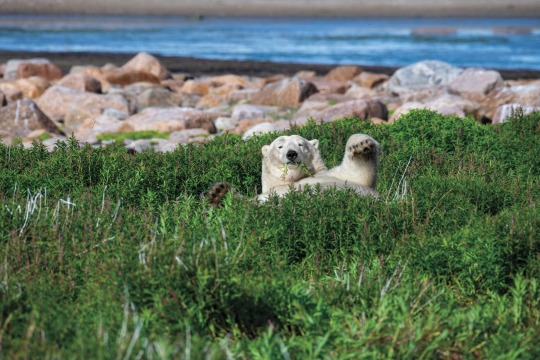
“We’d look around and say, ‘Where’s Wanda?’ Because if she was there, we didn’t have to worry about any other bears,” says Gregus, of the large but laid-back female.
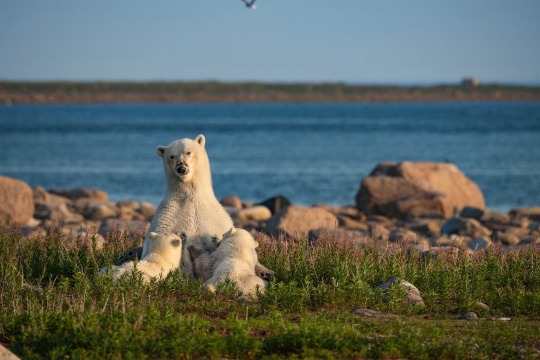
Cubs weigh just one pound at birth, but a diet of milk that is extremely rich in fat helps them bulk up quickly. Each cub will nurse for at least 20 months, and they usually stay by their mother’s side for two years.

In this part of the Arctic, everything’s flat, Gregus says. That means even a small boulder can provide a better view—if a bear hasn’t succumbed to sleep, that is. The bears, including Veronica (shown), often stood on this rock, scouring the area for seals to eat or bears to avoid. Gregus hopes to return to this coast, where he sees the bears “thriving and adapting to the environment.” But he knows that in most of their range, polar bears are suffering from the warming temperatures.
#The National Geographic#Jason Bittel#Photographs By Martin Gregus Jr.#Manitoba#Canadian Arctic#Bears’ Snoosing
0 notes
Video
“ Nap Attack “ // © Martin Gregus
Music: Kristian Sonderlund - World of Water
#Churchill#Manitoba#Canada#wildlife#polar bear#Wilderness#animal protection#4K#fpv#drone#reel#reels#explore#follow#discover#curators on tumblr
1K notes
·
View notes
Text

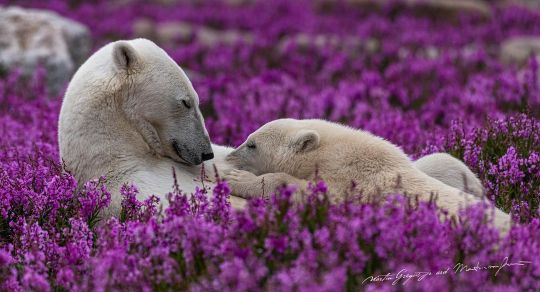


Family Portrait l Martin Gregus
#polar bears#animals#arctic circle#earth#polar bear#baby bear#animal#nature#photography#photos#wildlife#wild animals#bear cub#cute animals#drone shot
1K notes
·
View notes
Text

Martin Gregus - 33 Days Among The Bears
From his film
89 notes
·
View notes
Text

Snoozing polar bear, photographed by Martin Gregus Jr for Nat Geo.
88 notes
·
View notes
Text
Photographer Martin Gregus documented the lesser depicted side of polar bears, from cooling off in tidal pools to sleeping in purple fields fireweed flowers.
20 notes
·
View notes
Photo
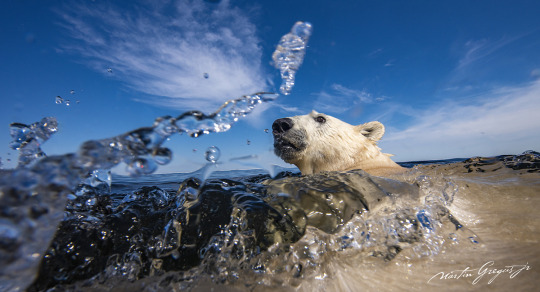
Drone Photographer Spends 33 Days Camping with Polar Bears in Canada
Photographer: Martin Gregus
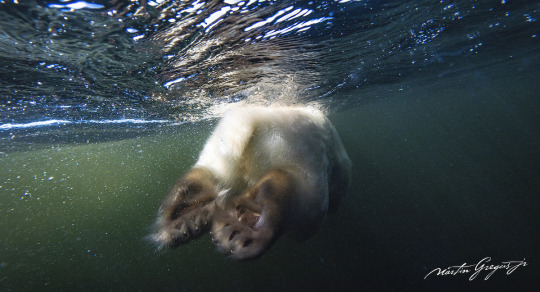
14 notes
·
View notes
Text

#1
2nd Place In Nature/Aerial/Drone: "33 Days Among The Bears" By Martin Gregus
from https://www.boredpanda.com/nature-photography-winners-international-photo-awards-2023/
6 notes
·
View notes
Photo


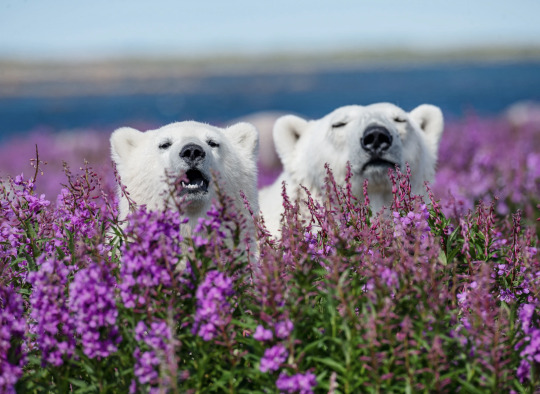
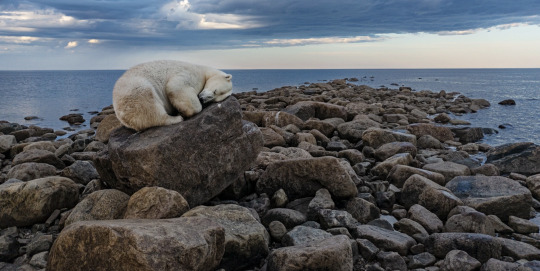
Photographs by Martin Gregus, Jr. From National Geographic:
Top Photo: Sleepy time: Even as a drone hovered above to get this image, a large male polar bear that photographer Martin Gregus, Jr. calls Scar never stirred in this bed of fireweed. Gregus says he named many of the bears in hopes it would help people relate to them as individuals needing protection. He spent two months in the Canadian Arctic and his photos reveal a softer side of the world’s largest terrestrial predator. “You always see polar bears on ice and snow,” he says. “But it’s not like they stop living in the summertime.”
Second Photo: Aurora and her cub, Beans, hunker down as a storm approaches. Thunder and lightning have recently become more frequent in this region as a result of climate change, Gregus says. Every time the sky cracked, the bears started shaking, like dogs hearing fireworks.
Third Photo: Beans and Aurora poke their heads above the blooming fireweed. Summer in the Arctic is vividly colorful.
Fourth Photo: In this part of the Arctic, everything’s flat, Gregus says. That means even a small boulder can provide a better view—if a bear hasn’t succumbed to sleep, that is. The bears, including Veronica (shown), often stood on this rock, scouring the area for seals to eat or bears to avoid. Gregus hopes to return to this coast, where he sees the bears “thriving and adapting to the environment.” But he knows that in most of their range, polar bears are suffering from the warming temperatures.
22 notes
·
View notes
Photo

Martin Gregus Jr, Winner of 2021 Wildlife Photographer of the Year
10 notes
·
View notes

